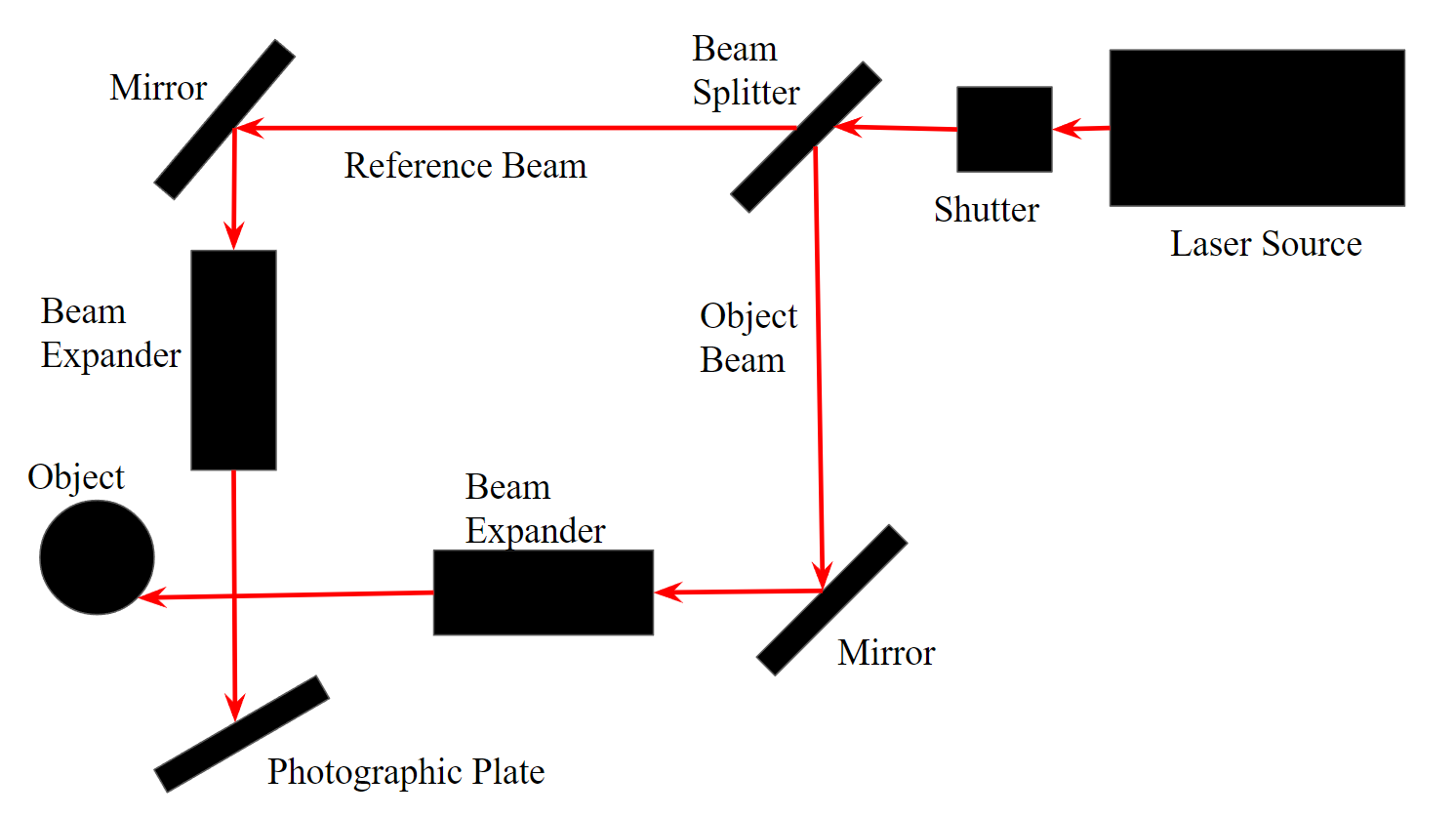Holography
Lab on holographic recording and reconstruction.
Throughout the course of my physics minor, this holography lab was one of my favorite labs (even though the equipment was really old…). Without getting into too much detail, the general idea is that, in contrast to normal films that only reproduce 2D projections by only capturing light intensity, the holographic film can record the 3D appearance of a source object by also encoding phase information.


After leaving the reference beam and object beam on, to let the photographic plate record for 20-25 minutes, you can reconstruct the source object with just the reference beam. To be totally honest, I have no idea how these photographic plates actually encode the phase from a material perspective, so outside of the physics, that part is still magic to me.

The results might not be as impressive as promised, but it took a long time just to get to that point - calibrating lasers was especially slow. Even with goggles, I’m not sure if my eyes will ever be the same… For reference, we also get to try the out-of-the-box Litiholo setup:

I started my physics minor for the sake of taking the light lab course, since light has always been an interesting topic for me. I can’t say I remember all of the content anymore, but I still think it was well worth it! I never would’ve been able to try out that equipment (or known how to use it) on my own. Now that I’ve completed the minor, I do want to find time to brush up on the material at some point and see what I can do outside of school.